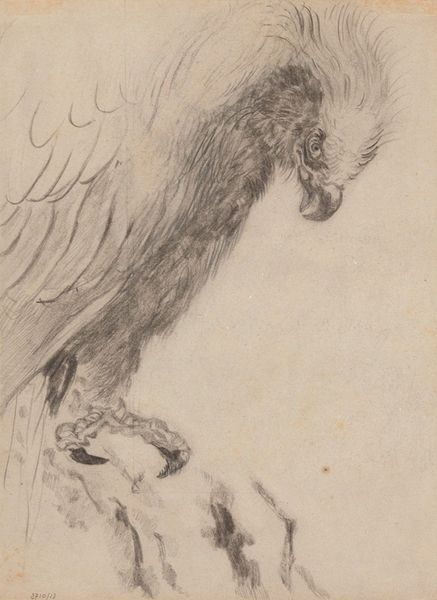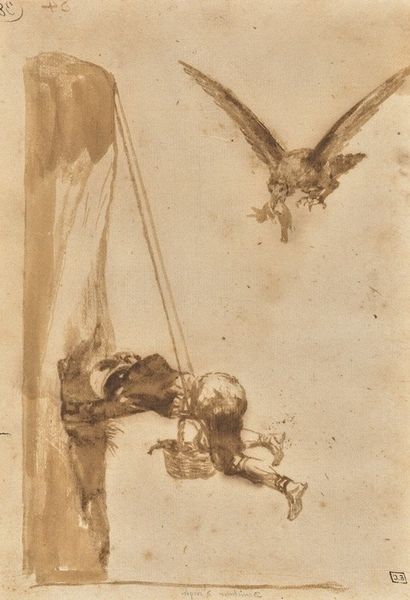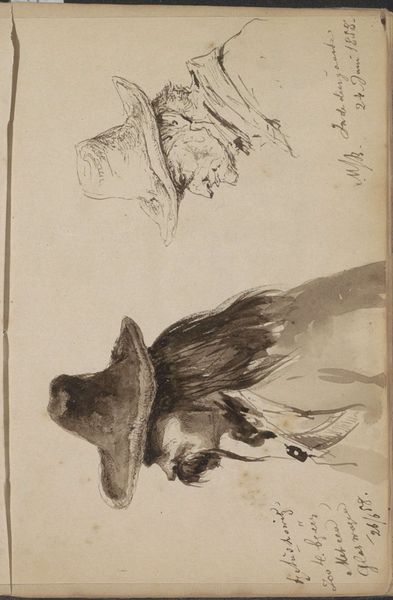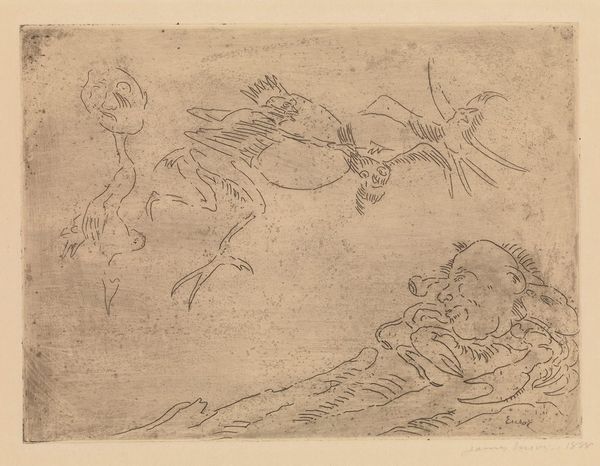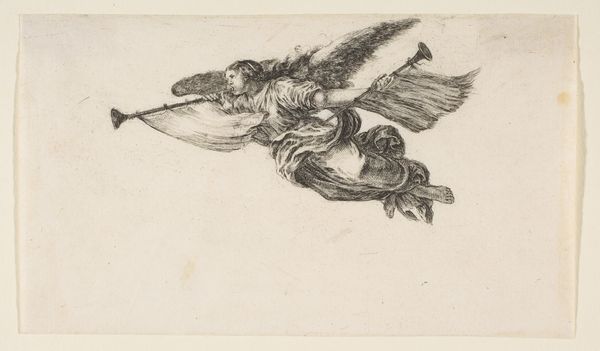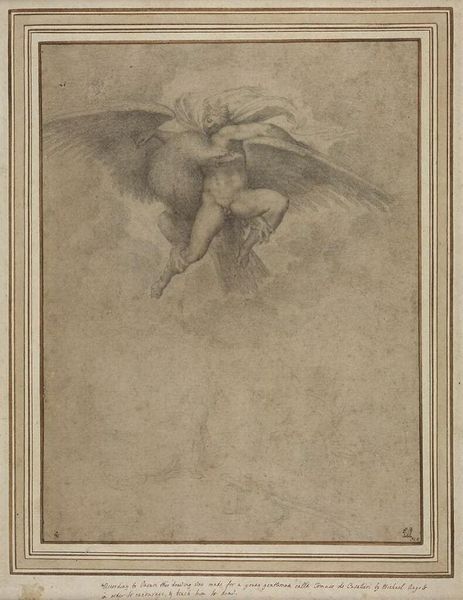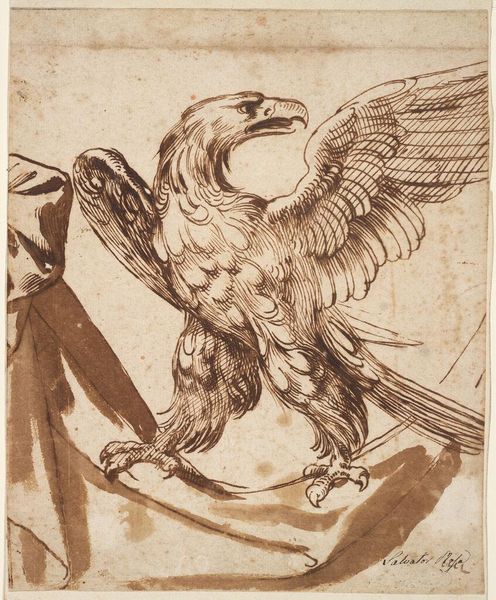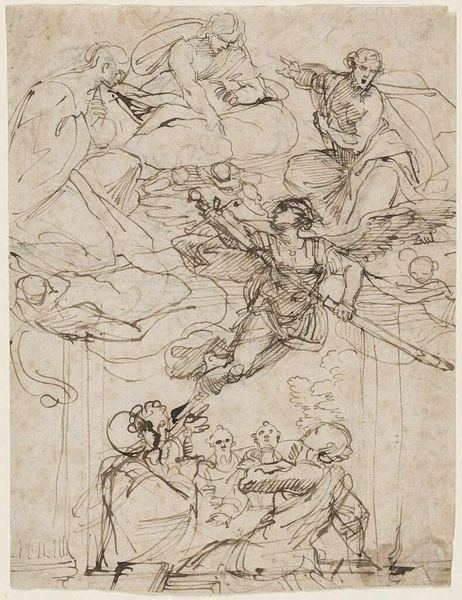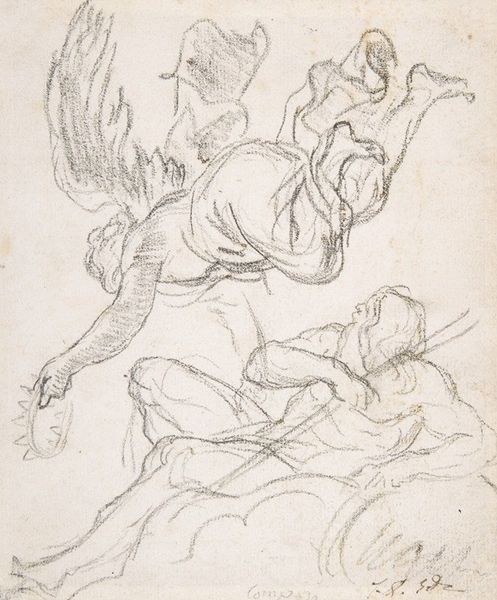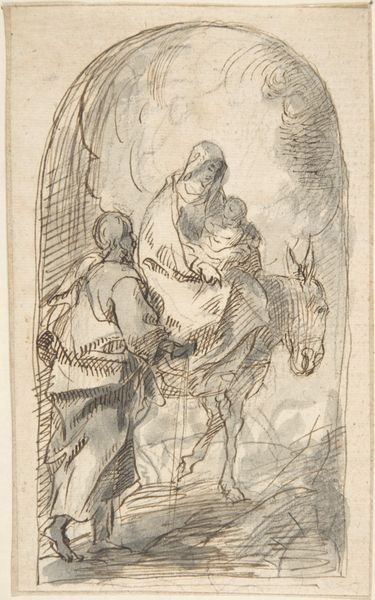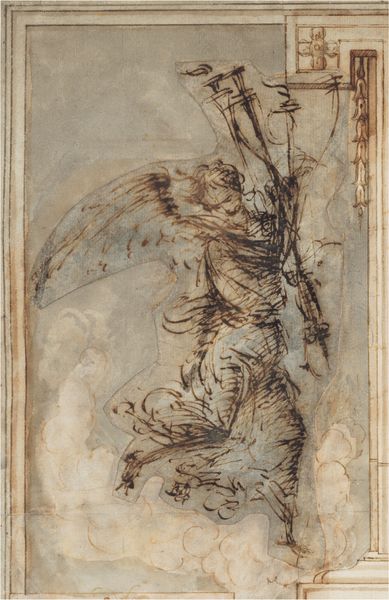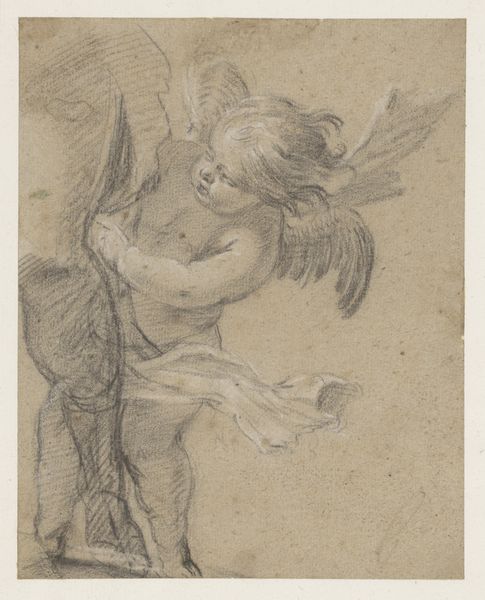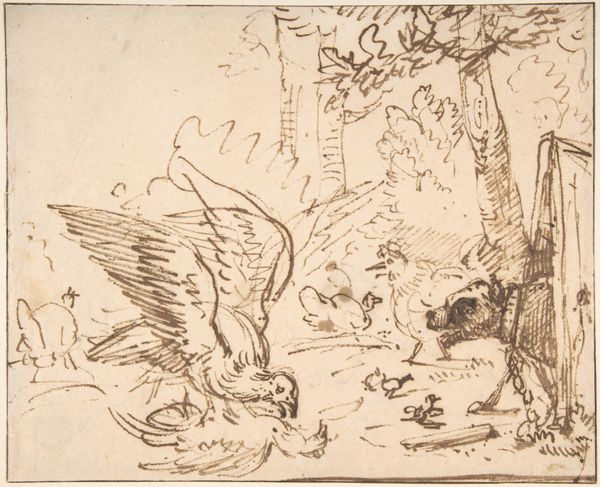
print, etching
# print
#
etching
#
fantasy-art
#
figuration
#
line
#
symbolism
Copyright: National Gallery of Art: CC0 1.0
Editor: This etching, “The Devil and the Fairy” by David Young Cameron, made in 1893, really strikes me with its eerie, ethereal quality. It’s like a half-remembered dream. What do you see in this piece? Curator: I see a potent exploration of duality, a recurring theme in the Symbolist movement. Look at the figures themselves: the Devil, winged yet earthbound, contrasted with the Fairy, seemingly delicate but also trapped within the lines of the etching. This tension speaks volumes about the psychological landscape of the time. Do you sense the echoes of other cultural anxieties in the artwork? Editor: I think so... I mean, there’s definitely a contrast, and both figures feel... I guess, trapped. In what way do the symbols of that time shape their portrayal in the image? Curator: Consider the Devil's halo - it's there, but faint, perhaps hinting at a fallen angel. The fairy is presented with butterfly wings. In many cultures butterflies stand as metaphors for spiritual transition. However, within this dreamscape, those butterfly wings can indicate her own transformative possibilities being possibly truncated, rendered almost ghostly by the artist's hand. Doesn't that contrast highlight a prevailing Victorian ambivalence about transformation, spiritual yearning and their limitations? Editor: That's a really interesting way to put it. The possibility of change, always lurking nearby... but possibly incomplete. Curator: Indeed. And it is through the careful examination of these seemingly opposing figures, the Devil and the Fairy, that we gain insight into our enduring fascination with cultural values, personal journeys, transformation and eternal tension that underscores not only Victorian society but human life generally. Editor: Thanks! It’s fascinating to think about those layers of meaning and tension behind seemingly simple choices in the work. Curator: My pleasure. Art invites us into deeper dialogue, doesn't it? With the art itself, yes. And, just as importantly, it encourages introspection that allows a deeper comprehension of our individual emotional responses.
Comments
No comments
Be the first to comment and join the conversation on the ultimate creative platform.

